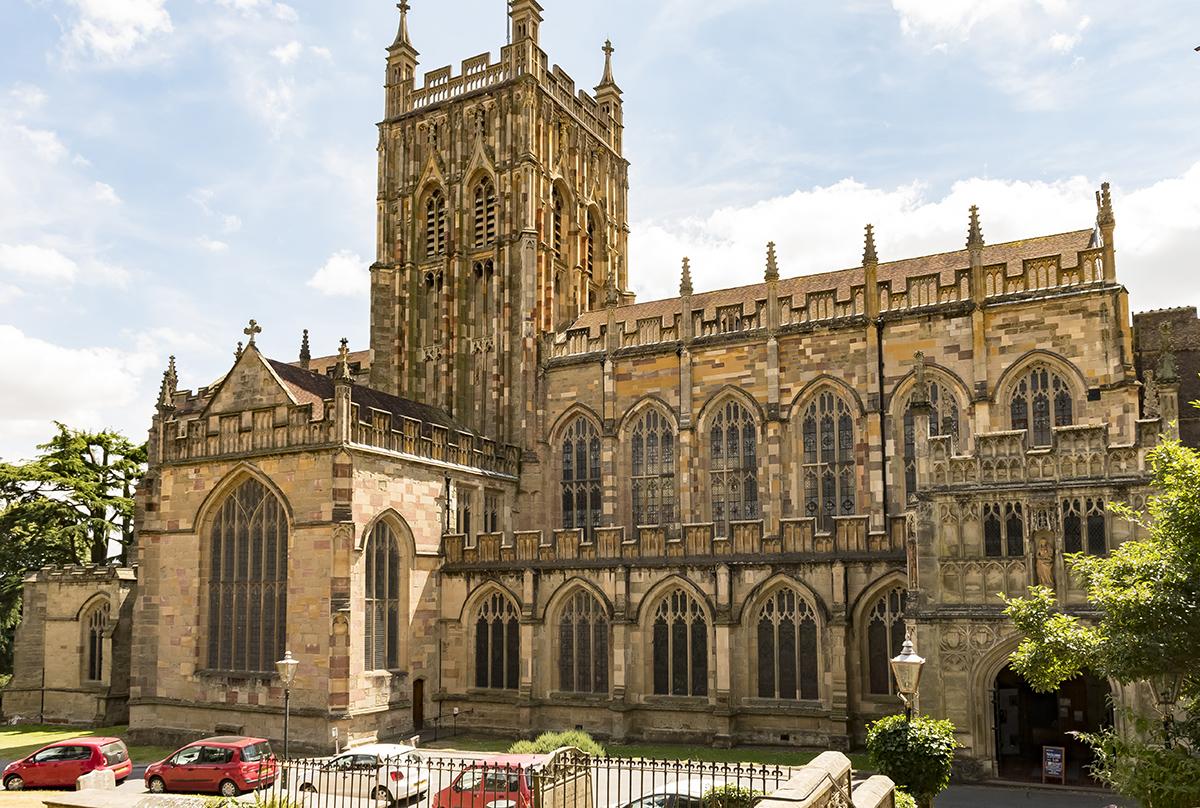San Steffan
Hen Faesyfed, Powys
Er iddi gael ei llosgi yn ystod Gwrthryfel Glyndŵr yn 1401, mae gan Eglwys Sant Steffan hanes cystal ag unrhyw gastell, gyda chroglen ganoloesol brin ac organ a all fod yr hynaf yn y DU.

When the priory was founded in the 11th century, this part of Worcestershire was a densely wooded forest, probably as remote as anywhere in England.
Great Malvern, Worcestershire
The natural landscape of the Malvern Hills is still important in the look and feel of the priory town, with the slopes of the hills a prominent visual backdrop. The remoteness helped to preserve the priory's treasures in the years after the Dissolution of the Monasteries in the 16th century.
The core of today's priory church, all that is left of what had been a monastic foundation, is the Norman architecture which can be seen in the nave and in the blocked south doorway. But much of the building we see now dates from a major rebuilding that happened in the last half of the 15th century. From this time date the chancel and its enormous east window, probably of about 1440. The tower was complete by 1460.
Work went on to transform the priory church into a building on a par in some ways with Gloucester Cathedral until 1500 and later. Barely forty years later Henry VIII's Dissolution of the Monasteries brought a complete change. The townspeople bought the church for £20, while the rest of the priory buildings were either leased or sold off, often to be demolished.
Between 1540 and the 19th century very little work was done either to maintain or repair the church, which meant that much that might otherwise have been 'modernised' or removed was left in place. Between 1860 and 1915 an enormous amount of repair and restoration work took place, including repairs to the stained glass.
It is the stained glass that is the finest treasure at Great Malvern: it is among the finest collections of medieval glass in England. It can be seen in many of the windows, particularly the east window, the chancel clerestory, St Anne's Chapel, north transept and west window. It was installed between 1450 and 1501. Scenes include several with Mary at their centre, the Passion and Crucifixion of Jesus, and Old Testament stories. Renowned figures of the time are shown, some dead, some living. These include Prince Arthur and Henry VII. Many other wonderful things can be seen in the church, including medieval stalls and misericords, a remarkable collection of medieval wall and floor tiles (made in kilns near the priory), and many monuments.
Hen Faesyfed, Powys
Er iddi gael ei llosgi yn ystod Gwrthryfel Glyndŵr yn 1401, mae gan Eglwys Sant Steffan hanes cystal ag unrhyw gastell, gyda chroglen ganoloesol brin ac organ a all fod yr hynaf yn y DU.
Capel y Ffin, Powys
Lleolir eglwys Sant Mair, Capel y Ffin yn nyffryn cudd yr afon Honddu, gyda’r Mynyddoedd Du i’r gorllewin iddi a Chlawdd Offa i’r dwyrain. Mae’n fan lle mae celfyddyd a thirwedd yn ymdoddi i’w gilydd – ac nid yw’n syndod felly iddi ddenu arlunwyr a beirdd am ganrifoedd.
Petrisw, Powys
Cyrhaeddir yr eglwys hon trwy deithio naill ai ar hyd lonydd troellog sy’n gyforiog o flodau, neu ar hyd llwybr troed. Wrth gyrraedd, fe welwch yr eglwys ganoloesol hon yn sefyll ar lethrau’r Grwyne Fawr, yn edrych heibio cwm bychan at lethrau Mynydd Pen-y-Fâl yr ochr draw.